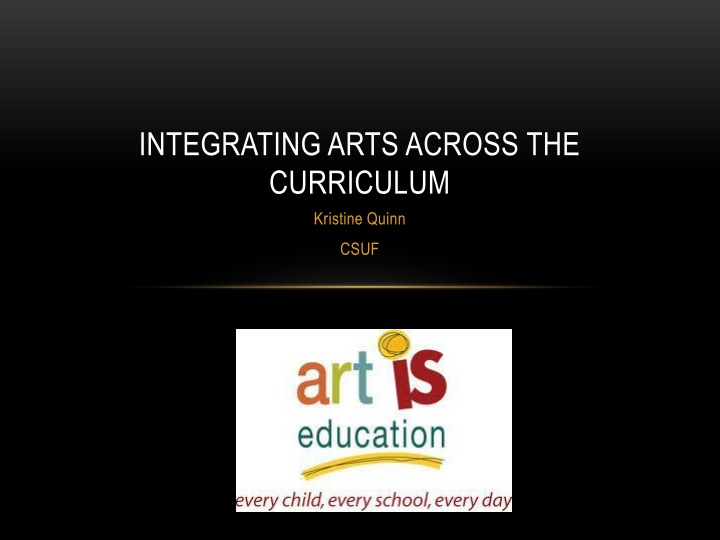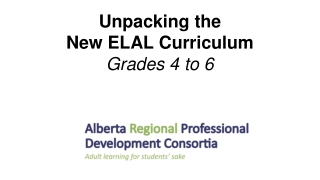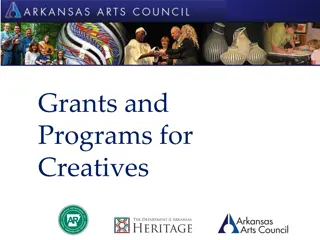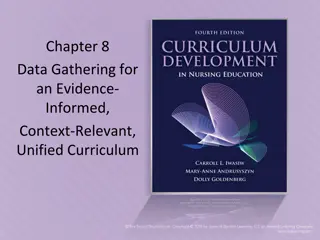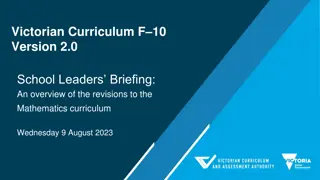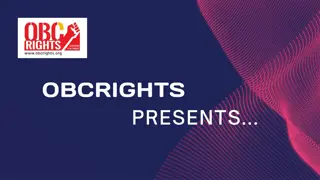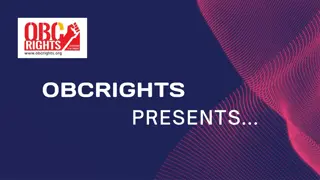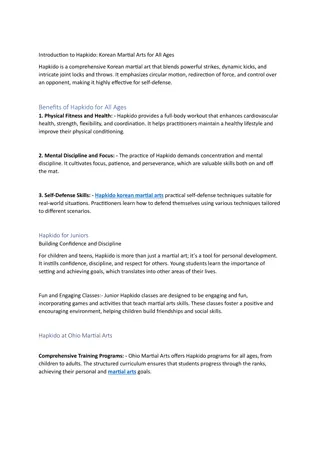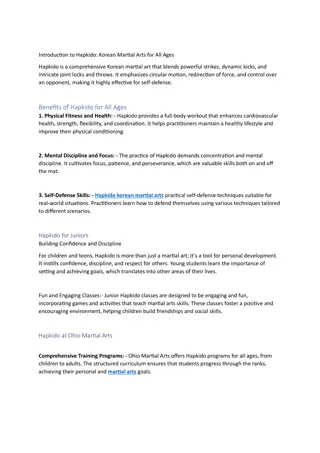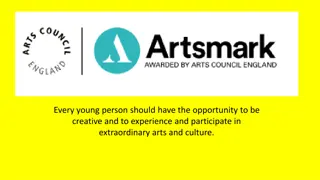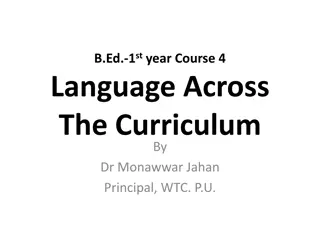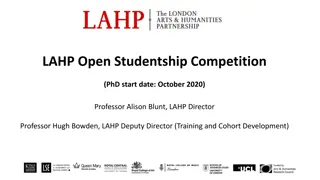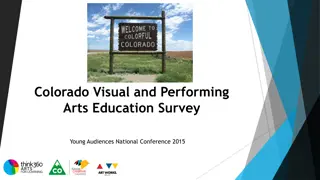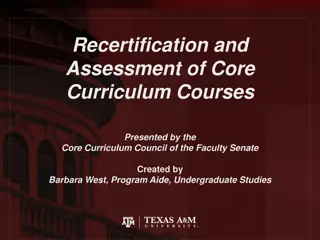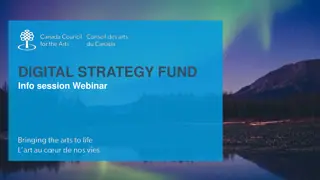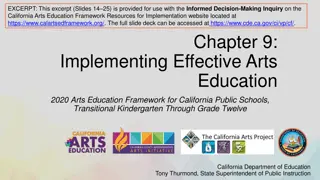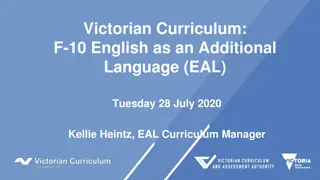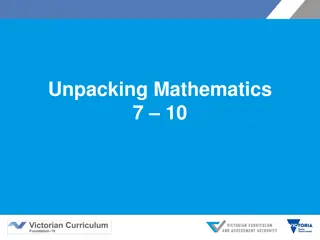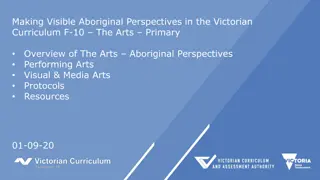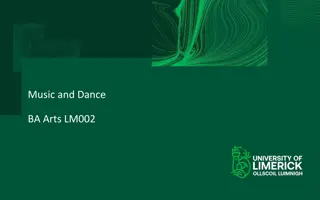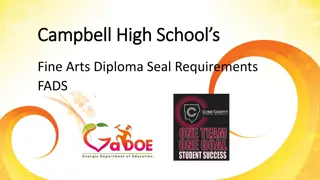Integrating Arts Across the Curriculum for Enhanced Learning
Enhancing education through arts integration across various disciplines such as language arts, social studies, science, and math. Recognizing the benefits of arts education in fostering creativity, problem-solving skills, and cultural understanding among students. Encouraging students to communicate proficiently in different art forms and develop a broad perspective of arts from diverse cultures and historical periods.
Download Presentation

Please find below an Image/Link to download the presentation.
The content on the website is provided AS IS for your information and personal use only. It may not be sold, licensed, or shared on other websites without obtaining consent from the author.If you encounter any issues during the download, it is possible that the publisher has removed the file from their server.
You are allowed to download the files provided on this website for personal or commercial use, subject to the condition that they are used lawfully. All files are the property of their respective owners.
The content on the website is provided AS IS for your information and personal use only. It may not be sold, licensed, or shared on other websites without obtaining consent from the author.
E N D
Presentation Transcript
INTEGRATING ARTS ACROSS THE CURRICULUM Kristine Quinn CSUF
NATIONAL VISUAL ARTS STANDARDS An education in the arts benefits both individuals and societies: Helps us understand human experiences both past and present Helps us lean to adapt to respect others ways of thinking, working, and expressing themselves Helps develop artistic modes of problem solving, which brings expressive, analytical and development tools to a situation
NATIONAL VISUAL ARTS STANDARDS Helps us understand the impact of design on all we use in daily like Helps us make decisions in situations where there are no standard answers Helps us analyze nonverbal communication and make informed judgment about cultural products and issues Helps us communicate our thoughts and feeling in a variety of modes, giving a powerful repertoires of self-expression
WHAT SHOULD STUDENTS KNOW AND BE ABLE TO DO IN THE ARTS? Communicate at a basic level in the four arts disciplines-dance, music, theatre, and visual arts Communicate proficiently in at least one art form, including the ability to design and solve artistic problems with insight reason, and technical proficiency Develop and present basic analysis of works of art from structural, historical and cultrual perspectives
Have an informed acquaintance with exemplary works of art form a variety of cultures and historical periods Relate various types of arts knowledge and skills within and across the arts disciplines
INTEGRATING ACROSS THE CURRICULUM Language Arts: vocabulary (language of the discipline) poetry, illustrating story line, poetry Social Studies: art analysis, cultural artifacts, biography, history Science: observational drawing, solutions, Math: tesselations, symmetry, quilt designs, tangrams, geometric designs
GALILEO GALILEI THE FATHER OF MODERN SCIENCE (1564- 1642)
LANGUAGE ARTS Children s literature: Starry Messenger A Caldecott Honor Book Poetry: A Full Moon Poem by Galileo
FULL MOON POEM TO GALILEO GALILEI Full moon poem to Galileo Galilei Under the canopy of your bed, You whose eyes were made to see the end of all sufferings you patiently awaited; what all other eyes would not see, then in a small room, under a bell tower, due glory you rendered saying, "I render in a room darker that the darkness infinite thanks to God for being so kind as that ravaged your kind blind eyes, to make me the first observer of marvels your bones were laid to rest. kept hidden from all previous times". But now, from the bell tower of Santa Croce, Given to you was, also, a first born child, resounds your glory, assigned to the Convent of San Matteo, and the bells of Santa Croce at so tender an age, with her younger sister! praise and glorify for ever the brightness And as you labored through every tempest, and the beauty of another God-given man, from the empoverished distant walls while your bones rest with Maria Celeste's of her Cloister much comfort she sent, in the tomb of Santa Croce. with words of strength and happiness. And we know that she was, for you, more than the brightest full moon in your heaven, Galileo and unlike the face of the sun, never on her soul, a spot could you have detected!
TIMELINE: (SOCIAL STUDIES) Born in 1564, the same year in which Shakespeare was born and the year in which Michelangelo died. Studied at the University of Pisa, Italy, appointed chair of mathematics His interest in science led Galileo to construct his first telescope in July of 1609. He published these discoveries in a book, the Siderius Nuncius (Starry Messenger) which caused an overnight sensation.
But when the book finally appeared in 1632, it raised an immediate storm of protest leading immediately to Galileo's arrest and famous trial by the Inquisition in Rome that found him guilty of having published a heretical book. In the end, Galileo had no choice but to repent and confess that he had gone too far. He was sentenced to life imprisonment, which he spent, for the most part at his own villa at Arcetri near Florence, under the surveillance of the Inquisition Galileo died in 1642,
A FEW OF HIS CONTRIBUTIONS The telescope Confirmation of the phases of Venus Discovery of the four largest satellites of Jupiter, named the Galilean moons in his honor Observation and analysis of sunspots military compass
WHICH LEADS US TO The Hubble Telescope Hubble is a telescope that orbits Earth. Its position above the atmosphere, which distorts and blocks the light that reaches our planet, gives it a view of the universe that typically far surpasses that of ground-based telescopes.
TASK Use water colors to create a planetary inspired work of art Start by lightly dampening the water color paper (use the rough side) Use a blotting technique, more water will result in lighter shades, less water will result in more vibrant shades Use glitter glue to make the stars.
